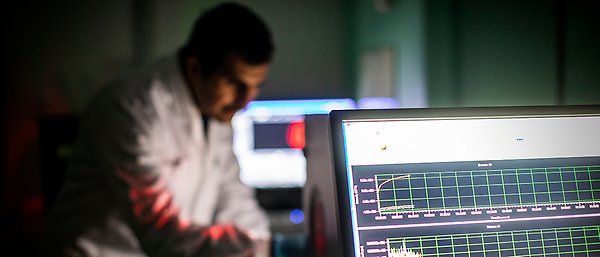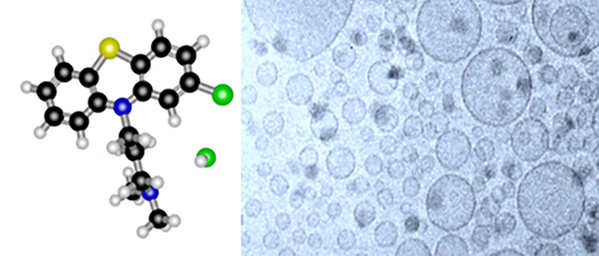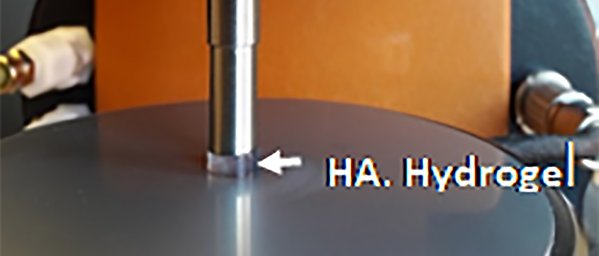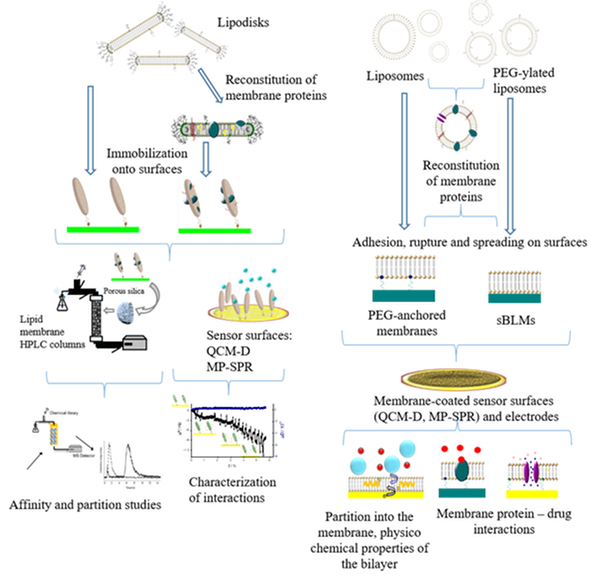Our research
Our research in Pharmaceutical Physical Chemistry aims to contribute new knowledge that will enable the development of new or improved systems for the administration of drugs.

Our research group in Pharmaceutical Physical Chemistry contributes to clarifying the relationships between the molecular structure of drug molecules, their physicochemical properties and the possibilities to control how they are stored in and released from different types of particulate drug carriers and formulations.
Our purpose is to create new knowledge making it possible to develop new or improved systems for the administration of drugs, including macromolecular drugs such as peptides and proteins, and small and amphiphilic drug molecules including cancer drugs. In our investigations we use a combination of experimental and theoretical methods. The experimental techniques include static and dynamic light scattering, small-angle x-ray scattering, small-angle neutron scattering, micropipette-assisted microscopy, confocal microscopy, atomic force microscopy, ellipsometry, and static and time-resolved fluorescence methods.
Our research group works with four main directions:
- Subcutaneous drug delivery
- Amphiphilic properties of drug molecules
- Gels for drug delivery
- Lipid membrane-based nanoparticles and supported structures as nanocarriers and biomimetic systems
Subcutaneous drug delivery
The rapidly growing biopharmaceutical market has been driven by the discovery of new molecules and innovative therapies with great medical potential. However, large classes of the newly available molecules are not suitable for oral and intravenous administration. Subcutaneous (SC) injection is an important alternative administration route but the way biopharmaceuticals behave immediately after administration is still largely unknown.

In this project we study how the constituents of the extracellular matrix in human SC adipose tissue interact with formulations of biotherapeutics
Amphiphilic properties of drug molecules
Many pharmacologically active compounds are made up of amphiphilic molecules and possess many similar properties to ordinary surface active agents. Amphiphilic drugs may be found within several classes of drugs including tranquilizers, analgesics, antibiotics, antidepressants, antihistamines, local anaesthetics, anti-inflammatory drugs and anticancer drugs. The amphiphilic nature of these molecules is expected to play a crucial role for their pharmacological activity as well as important properties related to toxicity and haemolysis. In drug formulations the amphiphilic properties of the active substance is decisively important for the molecular mechanisms of solubilisation and drug delivery.

In this project we study various aspects of the self-assembly process of amphiphilic drugs in presence of relevant drug delivery components
Gels for drug delivery
Charged polymer networks have the possibility to absorb water to form hydrogels, soft materials with interesting mechanical properties. In drug delivery they are useful as carriers of various types of drugs, including small molecules for cancer therapy and large molecules of biological origin for treatment of infections and genetic diseases. Microgels are microscopic hydrogel particles that can be injected into the body or applied to the skin. Hydrogels are useful in drug delivery, in part because they have the capacity to encapsulate and store large amounts of drugs in an environment that protects the drugs from degradation, and in part because the polymer network offers ways to control the rate of release of the drug.

In this project we mainly focus on fundamental aspects of the interaction between hydrogels and different categories of drugs and excipients (helper molecules) where the interplay between electrostatic and hydrophobic interactions and the elastic properties of the polymer networks is important
Lipid membrane-based nanoparticles and supported structures as nanocarriers and biomimetic systems
Lipid membranes play a key role in nature: they build the barriers separating living cells from their environment. These membranes are self-assembled structures, meaning that they form spontaneously when the lipids are mixed with water. The same phenomenon can be easily reproduced in the laboratory, giving rise to structures that strongly resemble biological membranes.
Dispersed systems based on self-assembled lipid bilayer structures, such as liposomes and lipodisks, are widely studied due to their unique properties as, e.g., biomimetic structures and drug carriers.

In this project we study the suitability of novel lipid-based nanoparticles as carriers for molecules of therapeutic interest. We also study and characterize any structural changes caused by the inclusion of amphiphilic or hydrophobic drugs into the lipid membrane structure.
